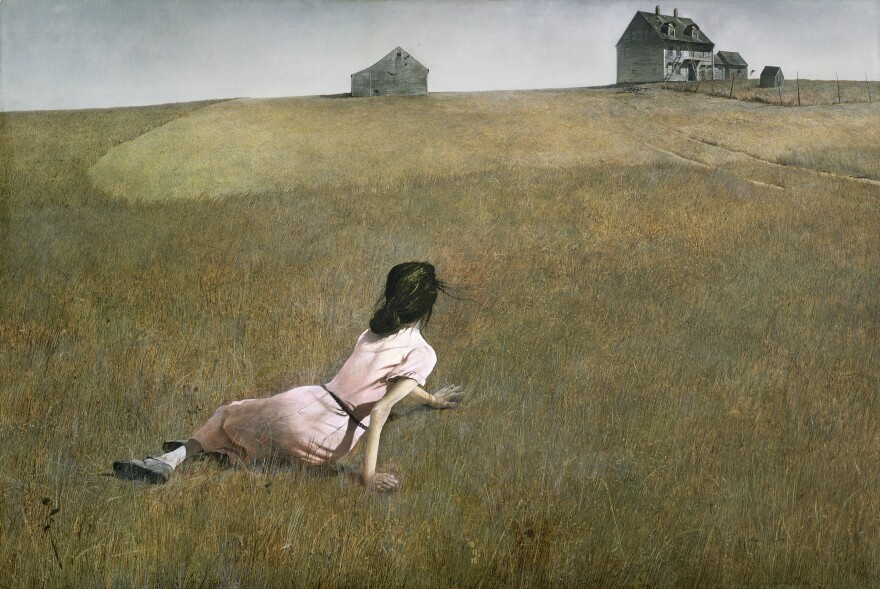One of the Philadelphia region's most celebrated painters was born in 1917 in Chadds Ford, Pennsylvania. As WRTI’s Susan Lewis reports, his work has also inspired music by one of the region’s most well-known contemporary composers.
On Saturday, September 9th, Dolce Suono performs Jennifer Higdon’s three-movement work, American Canvas, at the Brandywine River Museum as part of a centennial celebration of Andrew Wyeth.
Higdon, who grew up in a family with visual artists, turned her fascination with Wyeth into music.
Radio script:
[Music: “Wyeth,” from American Canvas]
Susan Lewis: A woman in a pale pink dress sprawls on a golden grassy field, looking away from us at a graying farmhouse upon the hill. In 1948, when many artists embraced abstraction, Andrew Wyeth created paintings such as Christina’s World.
Jennifer Higdon: If you look at his canvases, you can see every leaf, every blade of grass. You look at Christina’s World, it’s stunning!
SL: Composer Jennifer Higdon
JH: I find everything he's ever painted just incredible to look at.
SL: Higdon, who grew up in a family with visual artists, turned her fascination with Wyeth into music, one of three movements in her work, American Canvas. In addition to looking at the art, she visited his studio and researched his process, all of which informed her musical approach.
JH: I was thinking about the fact that he’s so meticulous that took him so long to do those paintings, and the detail in his paintings is probably greater than I think I’ve seen in any other painting.
So as a consequence, there are a lot more layers in that movement, and there’s just more intricate detail in the dynamics, the gestures, the way they repeat, because I imagined him making strokes, one stroke after another, tiny strokes. How did he paint every blade of grass? But he actually, he did. So I tried to create a movement that kind of reflected that.
SL: Andrew Wyeth’s studio in Chadds Ford is now a part of the Brandywine River Museum.


